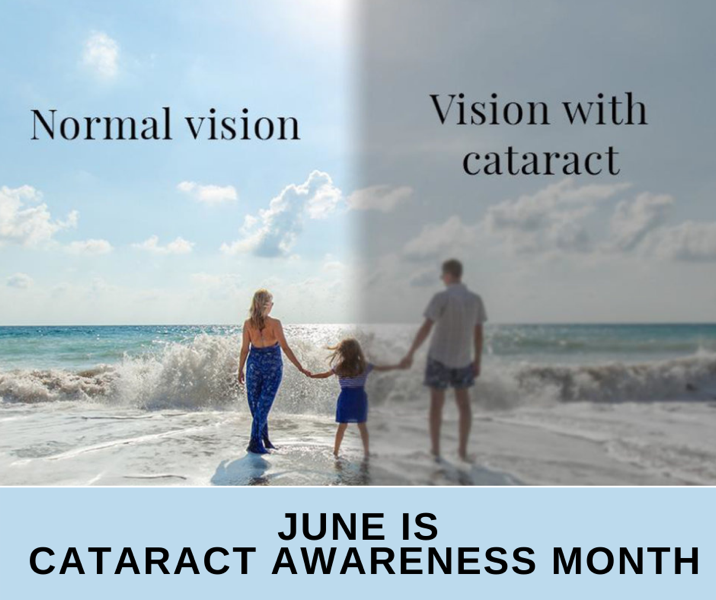
June is Cataract Awareness Month. Cataracts are the number one cause of preventable blindness throughout the world. Unfortunately, many people who suffer from cataracts in developing nations do not have access to care or technology that is required to diagnose and treat cataracts. With the advancement of technology, surgical procedures that remove cataracts have been developed and evolved greatly within recent times. These surgeries can restore vision within only a few minutes for those who have gone blind due to advanced cataracts. It is estimated that there are 4 million cataract procedures performed each year within the United States. Worldwide, that number is 28 million procedures each year or about 60,000 each day around the world.
Cataracts come about in the eye when a natural lens becomes cloudy and does not allow the light to enter the eye. The lens of the eye is a small transparent structure that assists bending light and allows it to be precisely focused onto the retina. In most cases, cataracts develop in the eyes of individuals over the age of 50. In some cases, it may be congenital or result from a specific disease or trauma. The way to treat cataracts is to have surgery that removes the lens; and it is replaced with an implant to help restore vision.
Just a couple of decades ago, cataract surgery was considered a high-risk procedure with long recovery times. Thanks to advancements, cataract surgery today is an outpatient procedure that can be done with the patient recovering at home the same day. In some cases, the individual may even be able to operate a vehicle the day after the surgery. The surgery itself involves a microscopic incision that allows the cataract to be removed. An intraocular lens is then implanted to replace the damaged, cloudy lens. Recovery time is rapid thanks to the quick healing from the tiny incision that is made during the surgery.
Symptoms of cataracts:
- Decreasing vision with age
- Blurred or double vision
- Seeing halos around bright lights
- Difficulty distinguishing colors
- Frequent prescription changes for glasses
- Difficulty reading
Causes of cataracts:
- Age
- Eye trauma
- Diabetes
- Smoking
- Glaucoma
- Sun Exposure
Treatment of cataracts:
- New glasses
- Anti-glare sunglasses or magnifying lenses
- Surgery

If you are experiencing cataract symptoms, contact your doctor to discuss your options.






